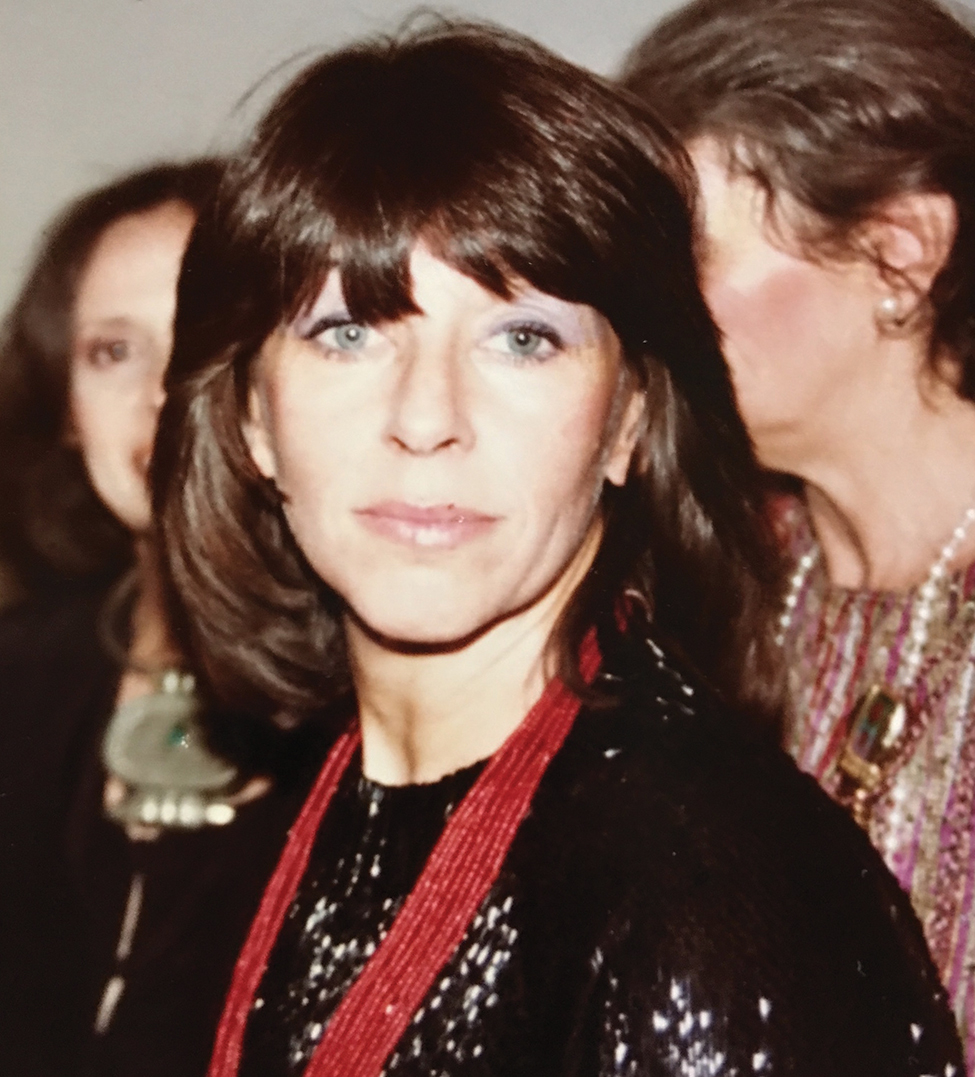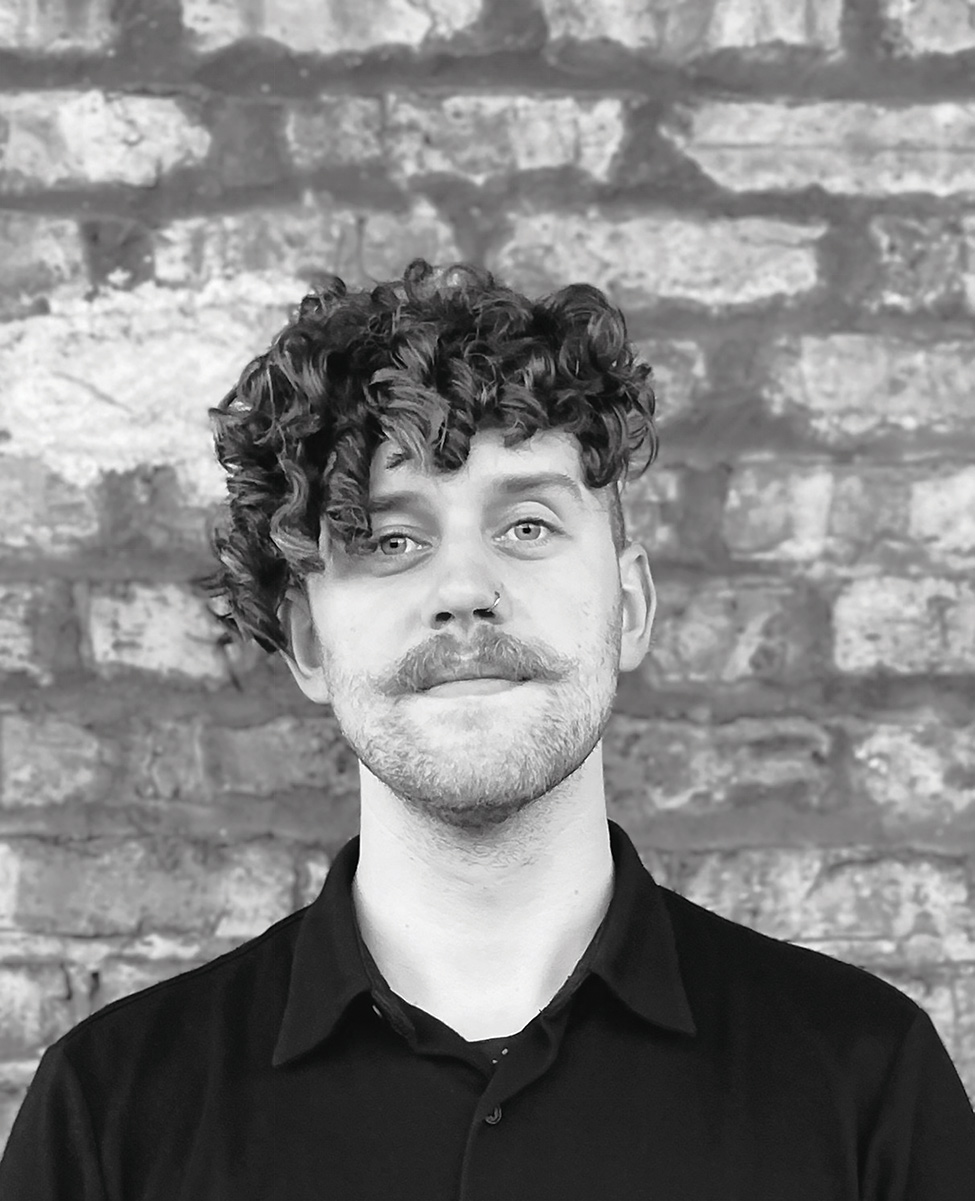A Classic Setting for Eclectic Art

By KEVIN NANCE
The artistic sensibility of Chicago architect Carlos Martinez’s collection is best described as “eclectic.” Within the 3,000-square-foot Gold Coast condo he shares with his partner, Michael Tirrell, Martinez has amassed a significant modern and contemporary art collection that juxtaposes abstract and figurative work, often hung in pairings that emphasize the contrast. The art, in turn, exists in a kind of creative tension with the highly traditional interior architecture of the building, an upscale 1897 Holabird and Roche apartment complex that was one of the first of its kind in Chicago’s Gilded Age.
A native of Cuba and a resident of Chicago since 1982, Martinez is now a principal at Gensler, a leading architecture firm, specializing in interior design. His taste for mixing periods and styles is evident at the couple’s Astor Street condo (which, they were happy to discover, was once occupied by László Moholy-Nagy, the Hungarian painter and photographer who founded the Institute of Design at the Illinois Institute of Technology). Rich wood paneling, molding and floors, a massive mantelpiece and bookshelves form a striking old-world backdrop for the art, much of it by Chicago Imagists Ed Paschke and Roger Brown.
Chicago Gallery News recently sat down for an interview with Martinez, his dog Blue snuggling beneath a blanket at our feet. Here’s an edited transcript of our chat.
Q: How did you get started as a collector?
A: It all started 28 years ago, which is when I made my first “serious” purchase—the first time I went into a gallery and bought something. It was a drawing by David Kotker, a young, up-and-coming sculptor here in Chicago who was doing some really big pieces. Zolla/Lieberman had a show of his studies for the sculpture, which were really wonderful, almost de Chirico-ish. A lot of David’s pieces were sort of perverted—the line drawing I bought has a kind of S&M quality. It’s really beautiful.
Q: You still have it?
A: Yes. I’ve never decommissioned a single piece. And then one day, David decided to get married, have a kid, and stop doing art. He was very well-known at the time—he was a darling of the art community here—but he’s not so well known now because he quit. I think I paid $600 for the drawing.
Q: Which was a lot of money then.
A: Oh yes. But it was a birthday present to my partner, Michael. So from that point, for every Christmas and every birthday, I would buy a new piece, occasionally more than one. We’ve been together for 28 years, so that’s how the collection happened.
Q: Had you been single, would you still have been collecting art?
A: Yes, for sure. I would have bought it for myself. (Laughs.) I’ve always loved art. My mother used to say when I was a kid, “When you grow up, I think your house is going to be like a museum.” (Laughs.)
Q: And so it is.
A: Yes, although I don’t think of it as a museum. (Laughs.) The other thing that happened was that around the time I bought that first piece, I did a project here in Chicago with a wonderful curator and art consultant, Emily Nixon. She’s extremely knowledgeable and has her own company, Nixon Art Associates. I told Emily, “Christmas is coming up and I want to buy a present for Michael. He has heard of this guy here in Chicago, Ed Paschke. Can you help me get a Paschke?” She said yes, she knew of a great piece by Paschke at a gallery in Michigan. I went to see it and loved it, but then she said, “Let me show you these other pieces also.” They were these two black-and-white drawings, “Hubert” and “Tudor” [1976]. And there they are [points to the drawings over the mantelpiece]. And then she said, there’s another piece, which I also loved. And I told her, “I’m going to buy them all.” So that was the beginning of the whole Paschke thing. Michael and I really love his work, and over the years, when something comes up at auction, I often bid on it. Roger Brown was the other artist who Michael liked in particular.

Q: You have several pieces by both artists, I see.
A: I think there are about a dozen Paschkes and nine Roger Browns. We also have several other classics—a Motherwell, a Nevelson, a couple Picassos. There’s an Ellsworth Kelly, which is one of my favorites. It’s funny, because everything is either highly abstract or completely figurative. Michael says, “If we go into another room with faces looking at you…” Paschke is always a face, you know.
Q: What was it about Paschke’s work that appealed to you?
A: Michael had met Paschke, and one of the things he really liked was how down-to-earth Ed was. I started reading about him, and I liked the story behind the art. When Ed did one of his early pieces of a female entertainer, he got some criticism for “exploiting” women. The story I was told was that the next year, he came out with this series of “Hubert” and “Tudor”—there was a third piece, which I’m tracking—about male entertainers, some of whom were transgendered. Ed was having a dialogue with the art community and its narrative around his work. I thought that was wonderful. I was on a panel recently and somebody asked me, “What inspires your work?” As an architect I look to the social construct of the time—what’s happening in the world, in popular culture. That was also the lens Paschke used in his art. The fact that he was a Chicagoan was also important, and that he was part of this school, the Imagists, with Roger Brown.
Q: What was the connection with Brown? Did you meet him?
A: I never met Ed Paschke, and Michael never met Roger Brown. Part of what we like about Brown is that many of his paintings are about buildings and the people in them. Everybody thinks, “Oh, you’re an architect, so of course you like Roger Brown.” It was Michael who was mesmerized by his depictions of glowing windows in the black-box buildings. He really connected with that, and I loved it too, because I love Mies van der Rohe, and we lived in a Mies building on Lake Shore Drive at the time. I also like how Brown depicts the sky.
Q: Those pillowy skies—
A: Pillowy, yes. Or they look like drapery. He was even more outrageous than Paschke with his critical commentaries. We went to a Brown show at the Phyllis Kind Gallery and saw the piece “The Jim and Tammy Show.” I loved it, in part because here again we are dealing with popular culture in the context of fine art. I can’t say I understood it; in fact I wondered, “What the hell does it mean?”
Q: You knew who Jim and Tammy Faye Bakker were?
A: Yes, although politically, I had absolutely no affiliation with their mission. I showed it to Michael and said, “We should get this, it’s so cool.” He said, “That is the most horrible thing I’ve ever seen in my life.” (Laughs.)
Q: It has a camp sensibility.
A: Super-camp. It’s about religious fanaticism, of course, but also the scandal they had. So about three years ago, that piece came up at auction, I think at Leslie Hindman, and I said, “I have to get it. I was destined to have that piece.” I gave it to Michael as a Christmas present. He got a big laugh out of it.
Q: I see you also have a print by Le Corbusier, which makes sense given the architecture connection.
A: Yes, I bought a book about his lithographs in 1979 when I was an architecture student. I bought it at the Le Corbusier Foundation in Paris, and probably paid $20. The book now is worth $800, which is what a copy sold for recently at auction. I loved the lithographs.
Q: He’s not so well-known for those, is he?
A: No, but they’ve become very collectible. The Peninsula Hotel has six of them. When one of the lithographs came up for auction at Leslie Hindman, I said, “I need to have this piece.” I had a business trip and had to be out of town, so I told Michael, “Could you please go to the auction and bid on this piece?” The day of the auction, I called home and Michael said, “I feel terrible. I got to the auction a couple minutes late and didn’t get to bid on the piece. I’m really sorry.” I was so disappointed. A few months later, Christmas Eve comes, and we were going to have dinner with Emily Nixon. We got in the car to go to dinner, and Michael said, “I forgot something,” and went back inside. He took a long time and I was getting upset. Finally we went to dinner and came home and were having tea. I said, “Wait a minute, there’s something different.” There was the Le Corbusier piece, framed and hanging on the wall. That was really nice of Michael.
Q: And kind of wicked, also.
A: Absolutely.
Q: Your architecturally traditional apartment sets up an interesting dynamic with contemporary art hanging on the walls.
A: I always loved the idea of the contrast between classical architecture and modern furniture and art. In Spanish, the word for furniture is mueble, and the word for real estate is inmueble. Literally, what’s movable is mueble and what’s fixed is inmueble. The terminology clarifies the fact that some things you take with you, and other things stay behind. To me, architecture is designed for the ages, but furniture and art reflect where you are in time. So coming to this classical apartment was about creating a tension between the two things.
Kevin Nance is a Chicago-based freelance writer and photographer. Twitter @KevinNance1
Image picture at top: Martinez shows off works by Paschke and Roger Brown alongside various artifacts.






